Posts Tagged: feral honey bee colony
The Eighth Wonder of the World
It's time to add an “eighth wonder” to the Seven Wonders of the (Ancient) World: a feral honey bee colony. One with exposed comb. Many of us have never seen the Seven Wonders: the Great Pyramid of Giza, Hanging Gardens of Babylon,Statue of...
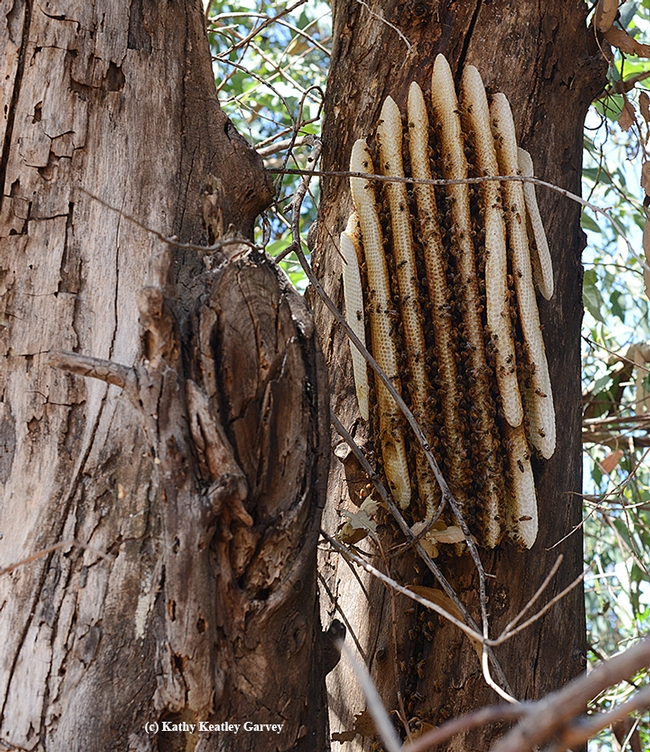
A feral honey bee colony, with exposed comb, on a Eucalyptus tree in Vacaville. (Photo by Kathy Keatley Garvey)
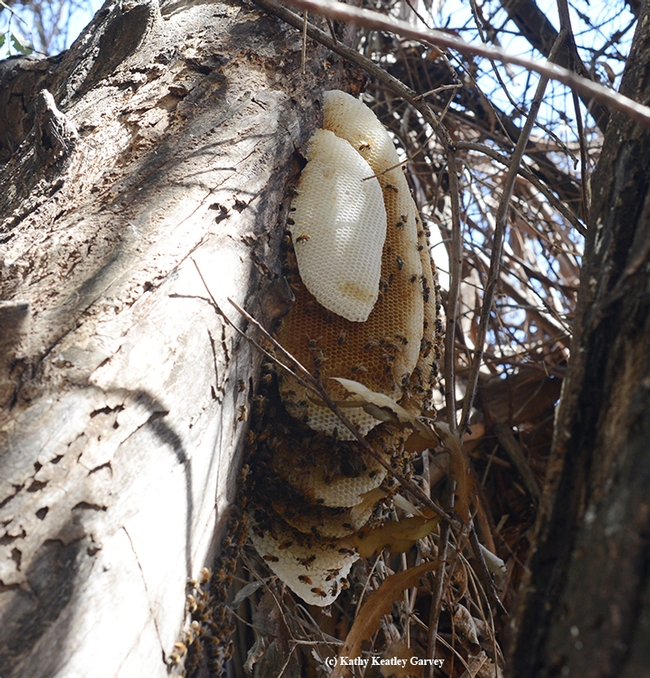
Another view of the feral honey bee colony. (Photo by Kathy Keatley Garvey)
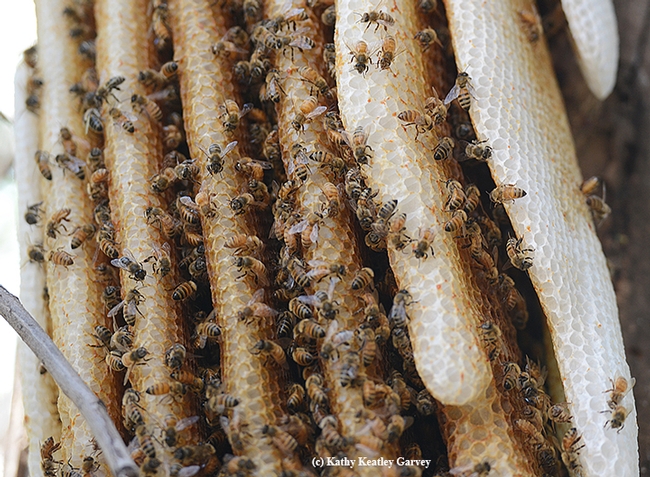
Close-up of bees in the feral colony. (Photo by Kathy Keatley Garvey)
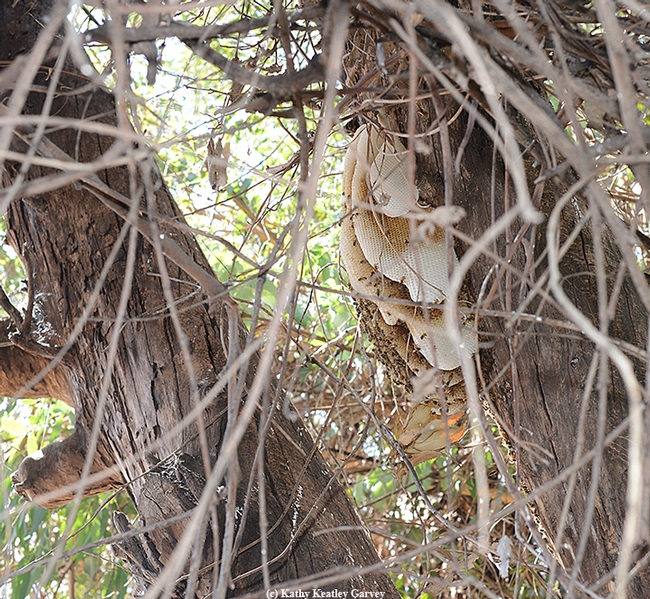
The feral honey bee colony is thriving. (Photo by Kathy Keatley Garvey)
Africanized Bees: How Far North?
Africanized honey bees arrived in southern California in 1994 and are expanding north. How far north are they now? That's the question being asked all over Central and Northern California, especially since "The Concord Incident" or what happened along...
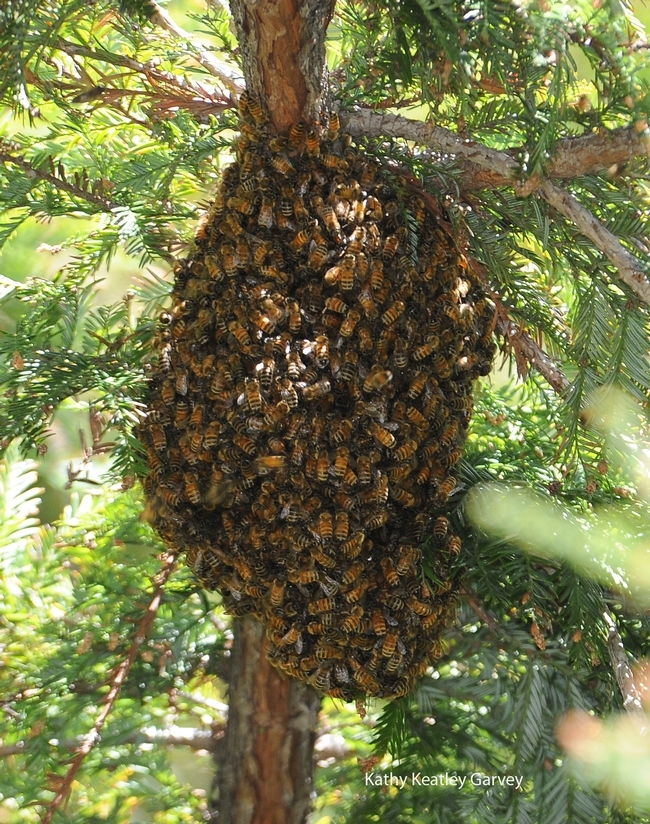
Collection of Africanized bee swarms can be an issue. These bees are European honey bees (not Africanized) that swarmed on the UC Davis North Hall/Dutton Hall complex in 2012. (Photo by Kathy Keatley Garvey)

Scientists are studying feral colonies for Africanized bee expansion. This photo was taken in 2011 in a Vacaville backyard; the European honey bee colony was a joy to the homeowner until its collapse. (Photo by Kathy Keatley Garvey)
'Out with the Old?' Not!
As 2012 approaches, it's "out with the old and in with the new!" Not always.The huge feral honey bee colony that we photographed Jan. 9, 2011 in a Modesto ash tree at a Vacaville (Solano County), backyard, is still going strong. Thirty feet off the...
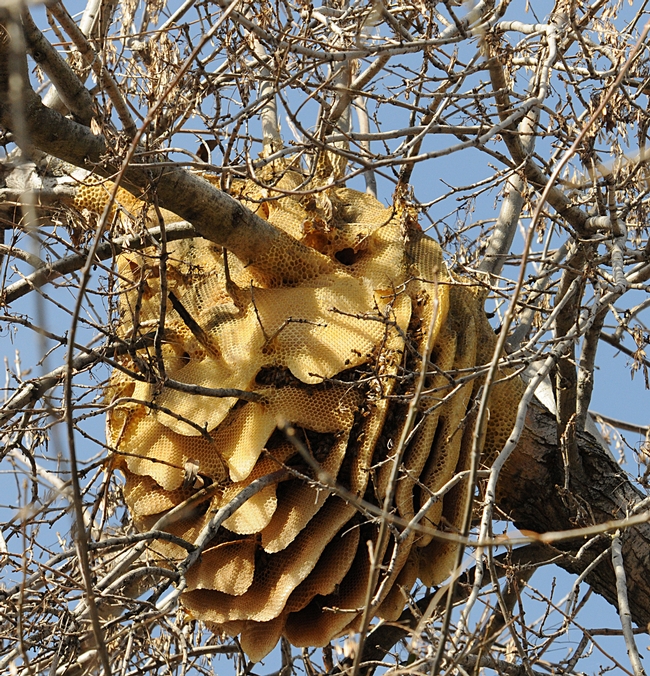
Feral honey bee colony in a Modesto ash tree in Vacaville is still going strong. On Sunday, it will enter its third year of existence. (Photo by Kathy Keatley Garvey)

